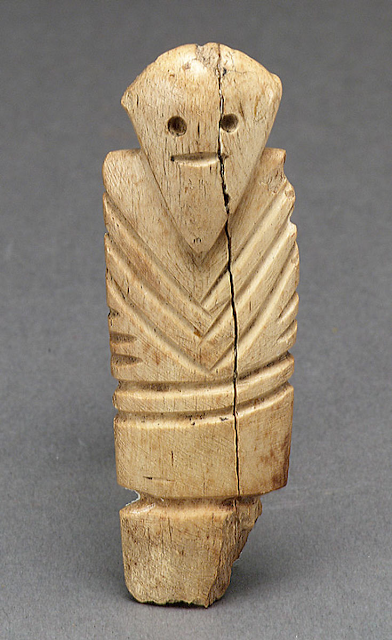Gobekli Tepe to Ancient Egypt?

Predynastic Egyptian carving (from metmuseum.org) There are now plenty of clear symbolic similarities between Gobekli Tepe and later 'intercultural' symbols found across Egypt, Mesopotamia, Iran and the Indus Valley. Apart from all the zodiac-like animal symbols, which seem to have informed some of the earliest deities in Ancient Egypt, we have the above figure (in the Met Museum), probably a time-controlling or creation deity, with a double-V neck symbol. We see a similar figure at Sayburc, which is also probably the same deity as Urfa Man (in Sanliurfa museum), Both the Sayburc figure and Urfa Man are thought to be contemporaneous with Gobekli Tepe. Note how Urfa Man and the Sayburc figure hold their genitals. We also know that the Ancient Egyptian creator deity Atum, one of the earliest deities known, possibly pre-dynastic, is said to have created the world through masturbation and is associated specifically with the setting sun. So, does the little Ancient Egyptian statue...
